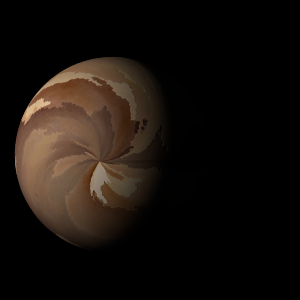|
|
Space Astro
|
Info for exoplanet "Moon-cisco'hoe"
| Scientific (actual) data |
|---|
| Name | Kepler-193 c |
| Planet status | Confirmed |
| Radius | 0.245 |
| Orbital period | 50.6975 |
| Semi major axis | 0.286 |
| Discovered | 2014 |
| Updated | 2021-02-05 |
| Tconj | 2454970 |
| Impact parameter | 0.06 |
| Publication | Announced on a website |
| Detection type | Primary Transit |
| Alternate names | 2MASS J19455966+4634380 c, K00590.02, KIC 9782691 c, KOI-590 c, KOI-590.02, WISE J194559.65+463438.1 c |
| Star name | Kepler-193 |
| Right ascension | 296.5° |
| Declination | 46.58° |
| Mag j | 13.539 |
| Mag h | 13.242 |
| Mag k | 13.218 |
| Star distance | 1038.87 |
| Star metallicity | -0.011 |
| Star radius | 1.15 |
| Star temperature | 6335 |
| Star alternate names | 2MASS J19455966+4634380, KIC 9782691, KOI-590, WISE J194559.65+463438.1 |
| Wikipedia article | Kepler-193 c |
Back
| |
| Fictional info (?) |
|---|
| Suggested name | Moon-cisco'hoe |
| Planet type | Cold planet |
| A prominent result is the "great brown spot", a giant storm that is known to have existed for centuries since it was first seen by telescope. |
| Atmosphere | Argon | 76% |
| Xenon | 21% |
| Krypton | 1.5% |
| Water vapor | 0.76% |
| Atmospheric pressure | 60 bar |
 |
| No known satellites |
| Google search for Moon-cisco'hoe |
|
Website by Joachim Michaelis
|
|
|
|